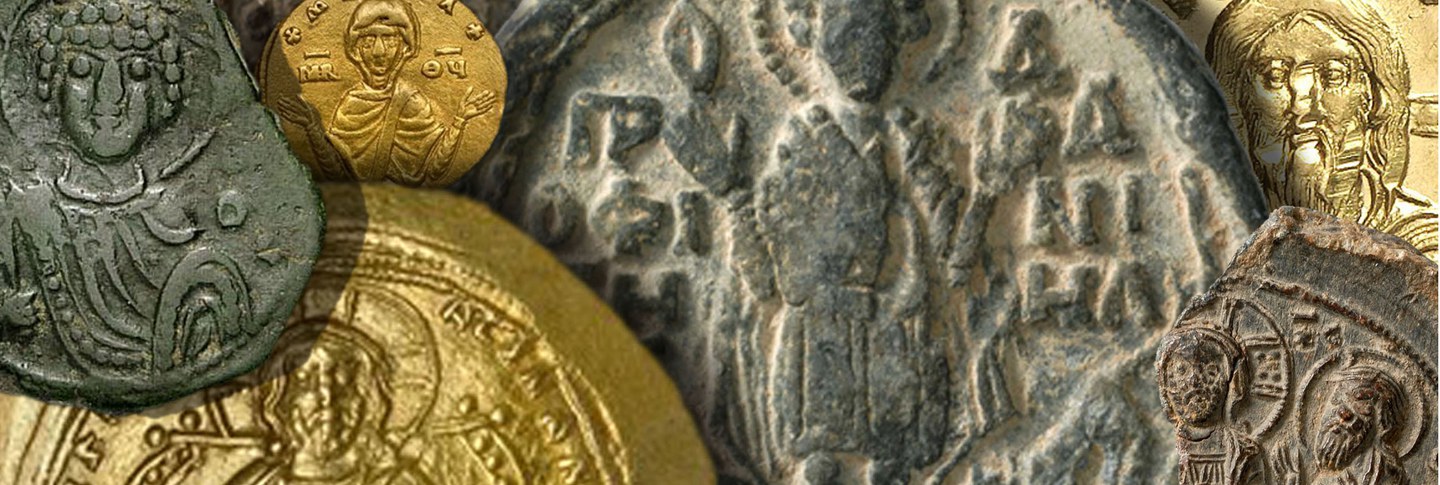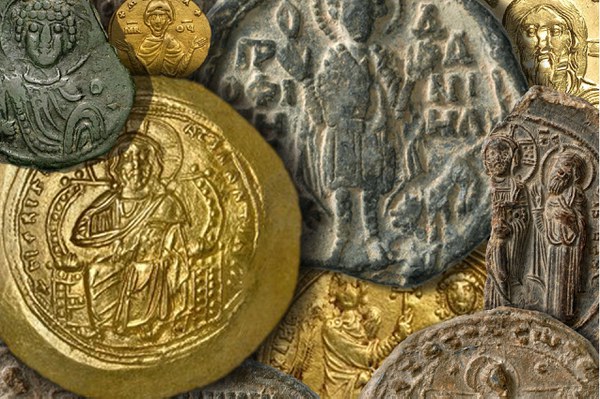At this year’s International Congress on Medieval Studies, Dumbarton Oaks hosted two sessions that explored new approaches and applications for the study of Byzantine coins and seals. The first of these, “Topics in Byzantine Sigillography,” brought together three speakers to discuss the material evidence of Byzantine-Armenian relations, judicial administration, and eunuchs in Byzantium. In addition to revealing rich veins of inquiry, the session underscored the impact that the Online Catalogue of Byzantine Seals has had on leading scholars in terms of advancing new questions and methods of research.
Felix Szabo, a PhD candidate at the University of Chicago, presented the early stages of a project that will quantitatively assess the seals of eunuchs as a way of investigating personal piety. In view of the limited evidence on seals, Szabo carefully identified eunuchs using a combination of known eunuch-only titles and offices and confirmation from written sources.
For his talk, Dimitri Korobeinikov, newly promoted associate professor of history at the University at Albany, SUNY, showed two objects with Armenian inscriptions from the Dumbarton Oaks collection. In a tour-de-force presentation, he set the two objects into the context revealed by Armenian sources, arguing that Byzantine attention toward, and influence in, the Armenian frontier was largely continuous into the twelfth century.
Jonathan Shea, assistant curator of coins and seals at Dumbarton Oaks, closed the session with a discussion of seals belonging to Constantinopolitan judges. As Shea explained, the seals reveal that these judges, affiliated with the Hippodrome and the Velum, simultaneously held positions in the provinces. In addressing this conundrum, Shea elucidated the transformation in provincial administration in the late tenth and eleventh centuries.
The four speakers in the second session, “Topics in Byzantine Numismatics,” explored questions of the propagandistic and administrative value of coins, materiality, and how archaeological investigation can challenge our understanding of the Byzantine economy.
Eric Medawar, a PhD candidate at Princeton University, discussed the anonymous folles (bronze or copper coins) of John I Tzimiskes. By analyzing evidence of finds from the region of Antioch, Medawar raised the possibility that the issuing of these coins was connected with the Byzantine military campaigns of the 970s, specifically arguing that the coins were intended for use in newly conquered provinces.
Andrei Gandila, assistant professor in the History Department at the University of Alabama in Huntsville, explored the copper coinage produced by the early Byzantine mint of Thessaloniki. By tracing the output and distribution of its coins, Gandila argued that Thessaloniki was a specialized center of production for certain copper denominations.
Stephanie Caruso, a PhD candidate at the Institute of Fine Arts at New York University, delivered a paper that explored the purpose of pierced coins, the relative value placed on their iconography, and the importance of their materiality.
Alan Stahl, curator of numismatics at Princeton University, concluded the session with a presentation of coin data from archaeological sites across Anatolia and the lands bordering the Aegean Sea. Stahl convincingly demonstrated that, with the exception of the imperial capital of Constantinople, there was a “dark age” for copper coin distribution across the empire from the seventh to ninth centuries.

